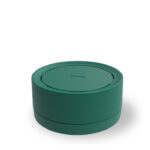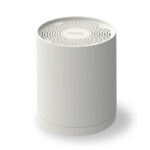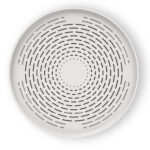Fine dust: the invisible substances that penetrate the lungs and bloodstream

What are the fine dust?

The air we breathe every day both outside and inside confined spaces contains a number of multiple pollutants. Among the most dangerous to human health are particulate matter.
Two main classes of particulate matter can be identified divided by size: PM10, the particulate matter with a diameter greater than 10 µm (microns), and PM 2.5 the particulate matter with a diameter less than 2.5 µm (microns).
To understand the size of fine particles, one only needs to consider that a human hair has a diameter between 50 and 70 µm (microns) and a grain of sand, on the other hand, is about 90 µm (microns) in size.
PM10 are able to penetrate the upper respiratory tract (nose, pharynx and trachea); while PM2.5, due to their very small size, can reach the lungs especially during breathing. These nanoparticles are able to enter cells causing serious damage including DNA mutations.
Where does fine dust come from?

Population exposure to particulate matter is caused by both anthropogenic activities such as household combustion processes, everyday products, dust lifting related to household cleaning, and releases from construction materials and furniture items, and natural activities such as erosion, caused by wind of rocks and other surfaces, marine aerosol formation, dust storms, fires, and gas releases from volcanoes.
The health effects

Particulate matter is able to absorb toxic gases and vapors on the surface of the particles.
When this occurs, concentrations of gaseous pollutants, which are transported by PM10 and PM2.5, increase and reach deeper areas of the lung. Numerous studies have shown that long-term exposure to particulate matter is associated with alterations in respiratory function, diseases such as chronic bronchitis and asthma, hospitalizations, and mortality from respiratory diseases.
Legislative Decree No. 155 of 2010 stipulates that the daily limit value corresponds to 50 micrograms per cubic meter (a value that must not be exceeded for more than 35 days in a year) while the annual average must not be greater than 40 micrograms per cubic meter.
The International Agency for Research on Cancer (IARC) has classified air pollution (of which air particulate matter is an indicator) in Group 1, that is, among human carcinogens.
Indoor environments are the most polluted places

Exposure to particulate matter is harmful to everyone, but there are categories of people and places where the risk is higher.
Indoor air is much more polluted than outdoor air because particles from the outdoors are added to those released by daily activities and furnishings.
Environments such as homes, offices, schools and most shared confined spaces, although they seem like safe and healthy places to us, turn out to be the most polluted and therefore the ones where we are most at risk.
Children are among those most at risk

The category most affected by fine particulate matter is children since during the growth phase, they can feel the negative effects even in the very short term.
Pollution retards lung growth, promotes asthma and slows cognitive development.
Children, having a higher respiratory rate than adults and the respiratory system not yet fully formed, are much more susceptible to allergies and are more sensitive to the effects of inhaling fine dust in polluted environments.
Pregnant or breastfeeding women: watch out for air quality

It is also particularly dangerous for pregnant or breastfeeding women to breathe in environments with unhealthy air.
During pregnancy, endocrine disruptions can arise from exposure to pollutants, which affect the mother’s hormone system and thyroid gland, affecting the development of the baby’s brain, as stated by the Cultural Association of Pediatricians.
Air pollution has caused nearly 6 million pre-mature births and 3 million babies to come into the world underweight.
What do colleagues breathe in their offices?

Indoor pollutants are not only present inside homes, but also in schools and especially in offices.
Major sources of pollution include electronic devices, printers, fax machines and copiers, which can lead to exposures to ozone and heavy metals.
Therefore, those who work in work environments in close contact with such technological tools are at high risk of contamination and impairment of their health.
The importance of awareness

The most effective solution to lowering particulate matter remains to reduce air pollution.
Each of us can do our part by adopting responsible behavior, reducing the use of polluting products, monitoring indoor air quality in the environments where we spend most of our days, and deciding to take action if necessary.







